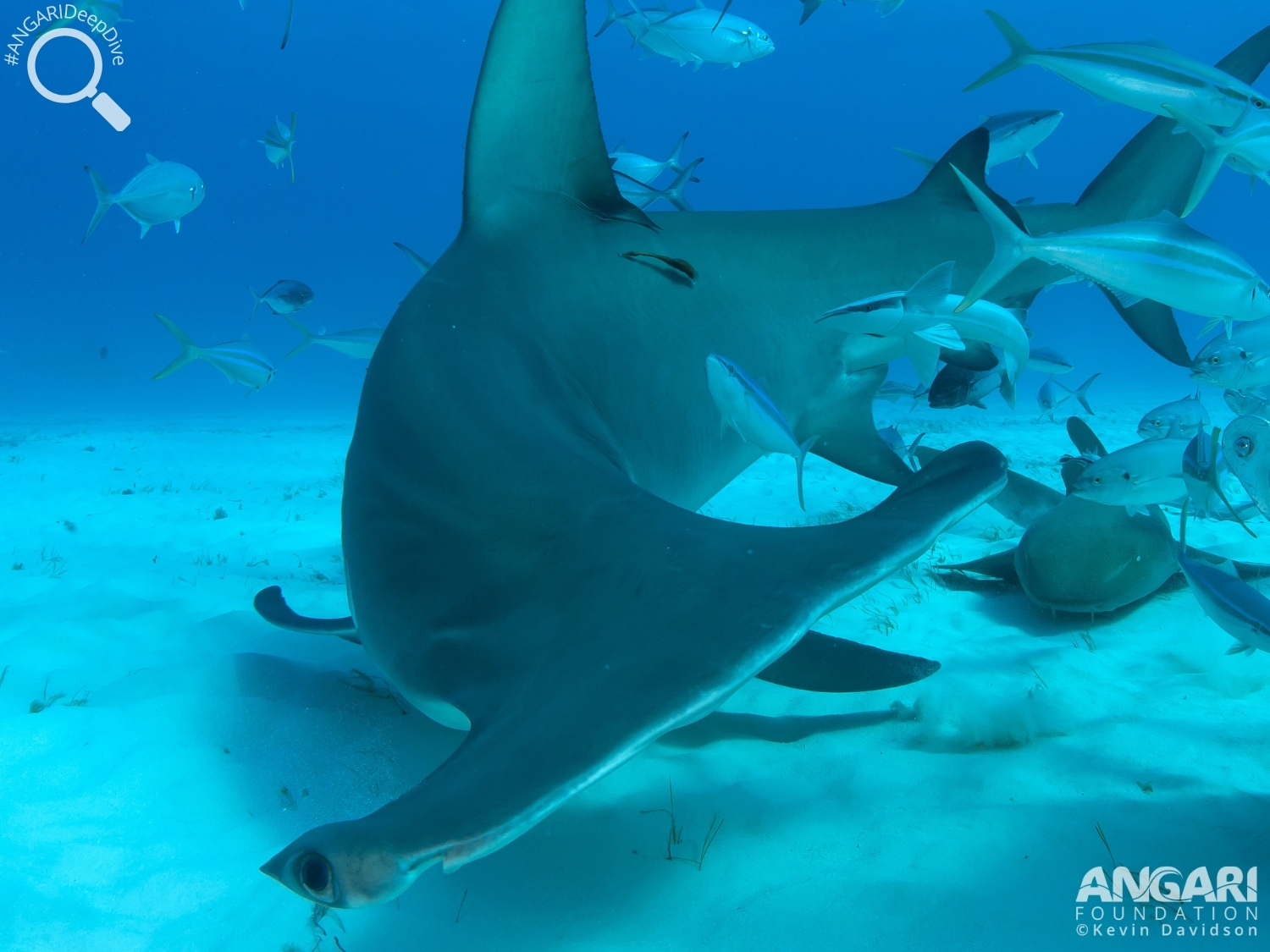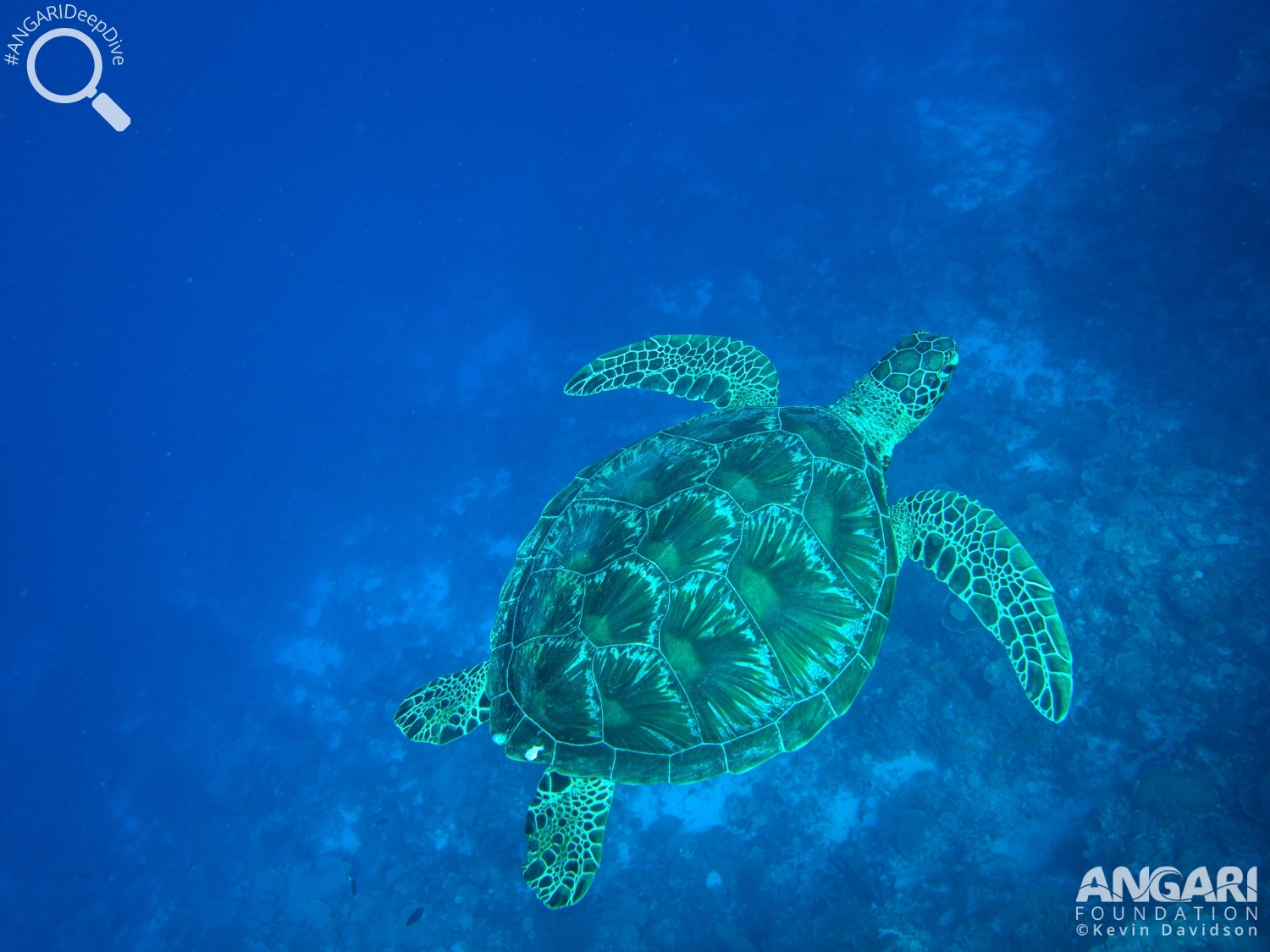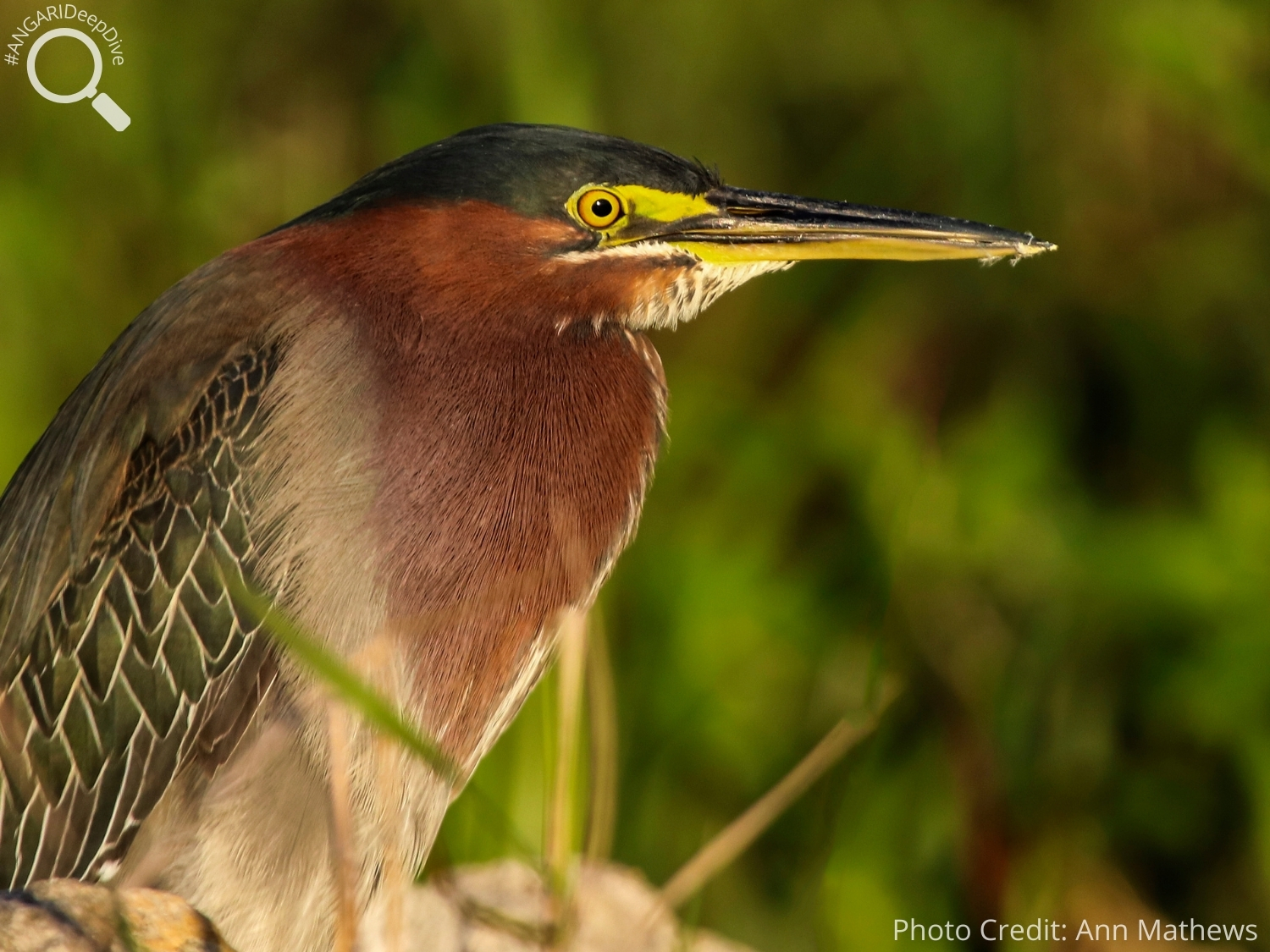The great hammerhead shark (Sphyrna mokarran) is an apex predator within the shark community and…
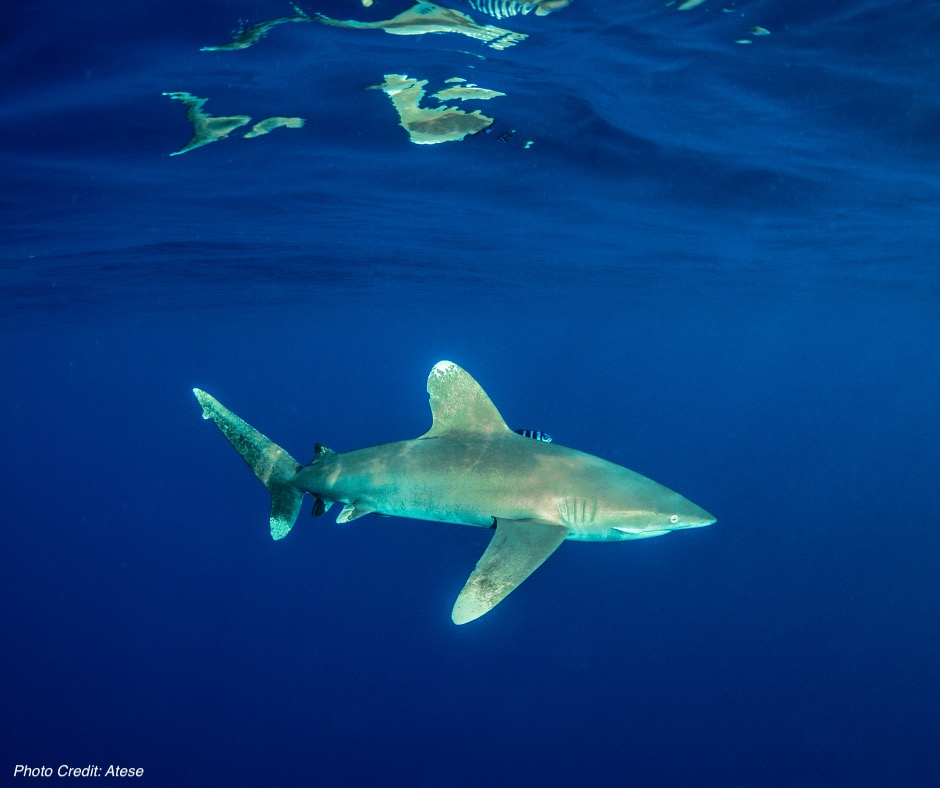
Oceanic Whitetip Shark (Carcharhinus longimanus)
The oceanic whitetip shark (Carcharhinus longimanus) is a top ocean predator. One might confuse their name with the whitetip reef shark, but these two shark species look nothing alike and don’t often cross paths! Oceanic whitetips have rounded, white-tipped fins and prefer the open sea over shallow reefs.
Dive in with us and learn more about this fascinating species.
#1: Where can you find oceanic whitetip sharks?
The oceanic whitetip shark is found offshore in deep tropical and subtropical waters around the world. There have been sightings of this shark at depths of 1,000 meters, but they are more commonly found from 600 ft deep to the surface. In the western Atlantic you can find these sharks as far north as Maine and as south as Argentina where waters are at the optimum temperature (64°F to 82°F) for this species.

#2: How large can the oceanic whitetip get?
Records reveal this shark has reached lengths up to 13 feet, but on average, this species doesn’t normally exceed 10 feet. Both male and female oceanic whitetips mature at a similar size (5.9 feet), but adult females are larger than adult males.
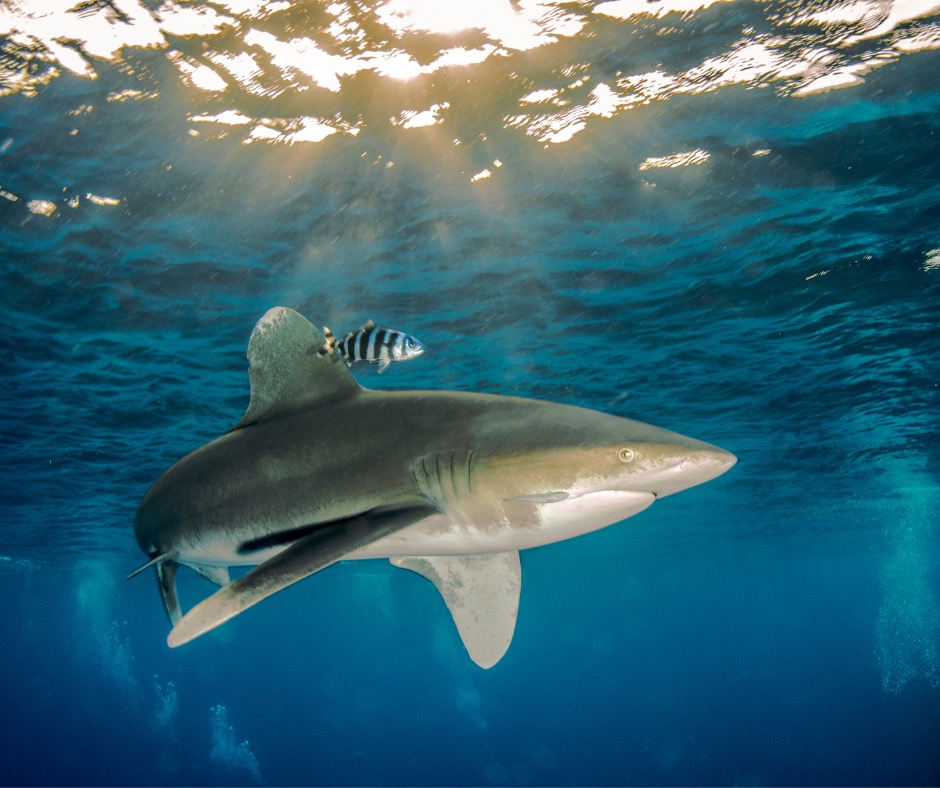
#3: Oceanic whitetip sharks aren’t fussy eaters.
The oceanic whitetip shark is an opportunistic feeder. This is a species that will eat anything it comes across because their meals are not consistent. Oceanic whitetips will eat any of the following:
🍽️Tuna
🍽️Marlin
🍽️Cephalopods
🍽️Sea bird
🍽️Other sharks
🍽️Trash

#4: How does the oceanic whitetip shark breathe?
The oceanic whitetip shark doesn’t have the ability to pump water over its gills like some other sharks, so they have to constantly be moving. As they swim, oxygenated seawater washes over their gills, allowing them to breathe.

#5: Oceanic whitetip shark reproduction strategies
In the Atlantic, the mating season for the oceanic whitetip shark is in the summer. A female oceanic whitetip carries her pups for 10-12 months before giving birth to an average of 6 live pups. However, they can birth anywhere between 1 and 15 pups, and it is thought that there is a relationship between the size of the female and the number of pups she will birth; the bigger the shark, the more pups she will have.
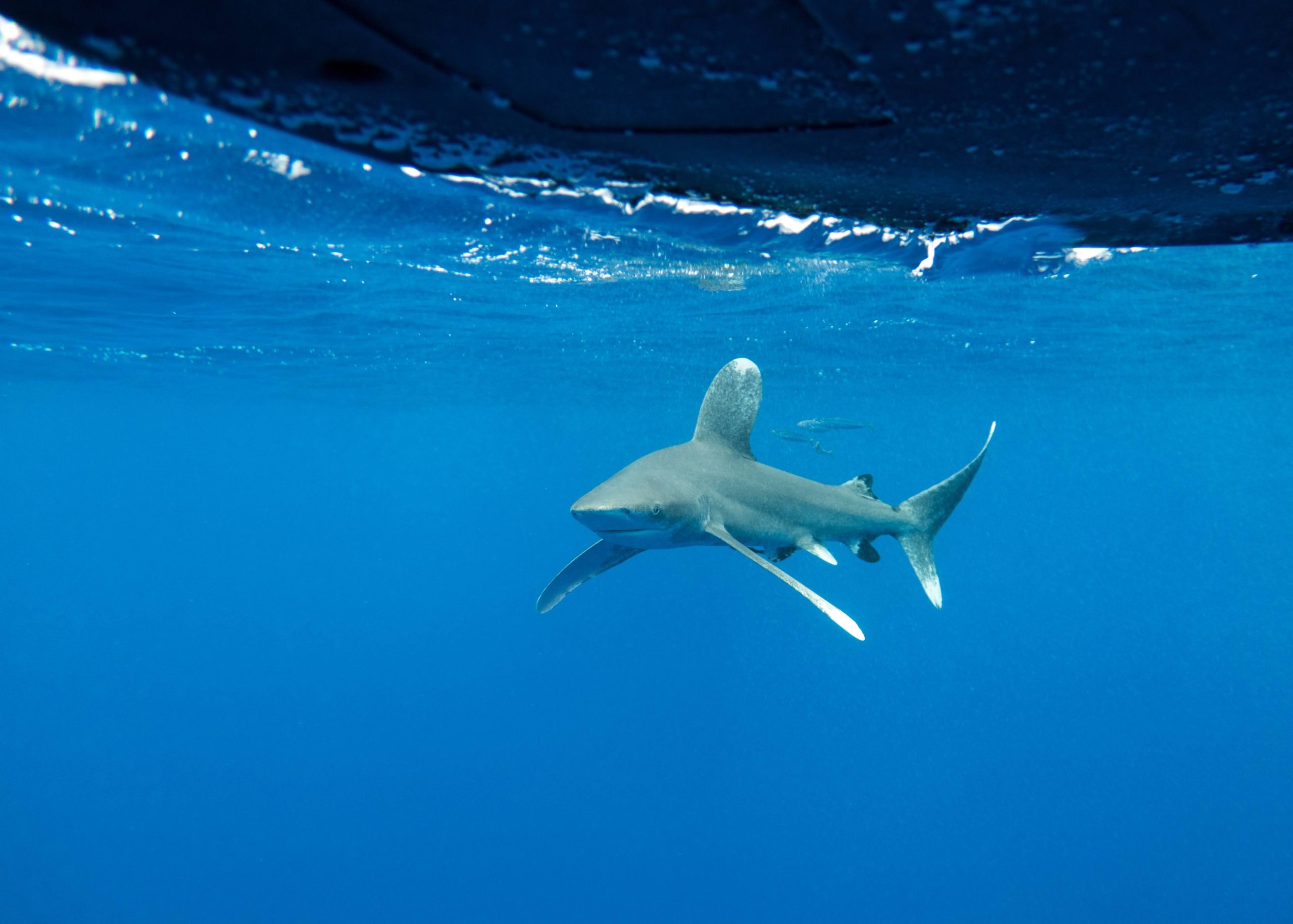
#6: Oceanic whitetip sharks use countershading!
Oceanic whitetips spend their time in open water with no cover from predators and nowhere for their prey to hide. One way these sharks adapt to this is using their coloration. Their underbelly is white in color and their topside is a darker color like brown, gray or bronze. This color combination creates countershading, providing camouflage from below and above.
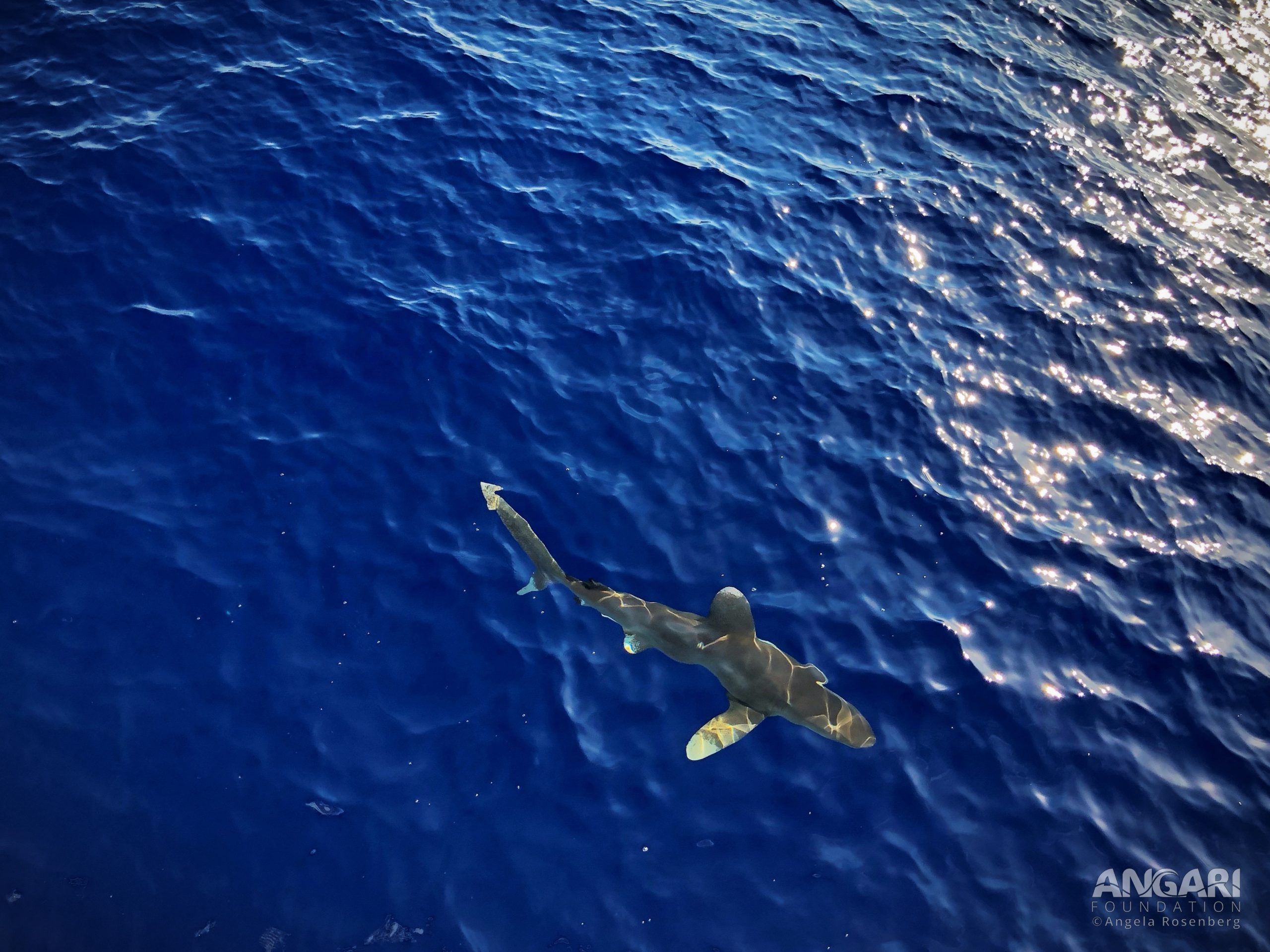
#7: Oceanic whitetip sharks need company too!
It is not uncommon to see pilot fish swimming with oceanic whitetips because of their mutualistic relationship. The shark provides the pilot fish with protection from predators, and in return the fish keeps the oceanic whitetip shark free from parasites.
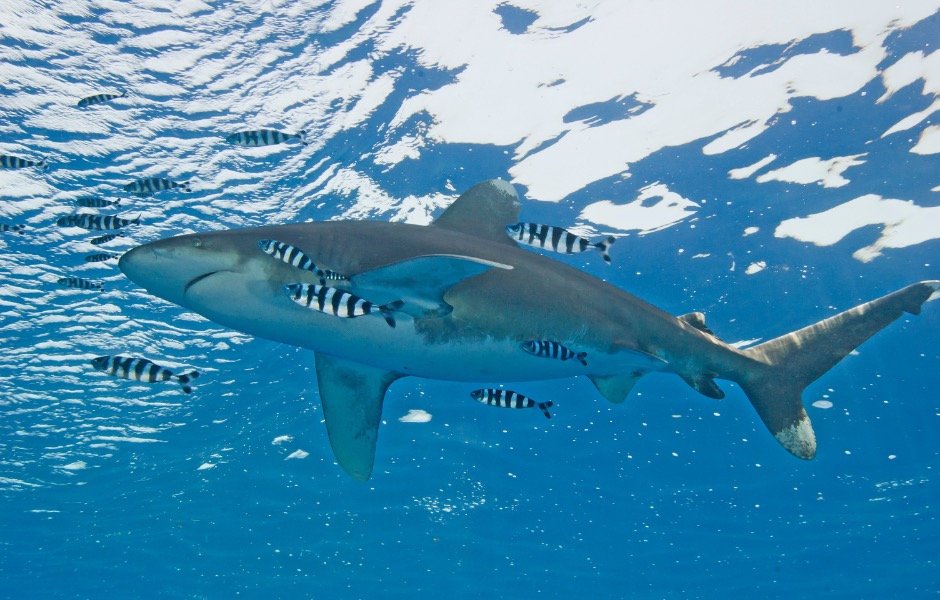
#8: Oceanic whitetips have quite the reputation.
Oceanic whitetip sharks don’t have the best reputation when it comes to their relationship with humans. In 1945 the USS Indianapolis was sunk and left many sailors stranded at sea. It has been reported that up to 150 people were attacked by sharks, including oceanic whitetips, while waiting to be rescued!
These sharks are opportunistic feeders and show little fear when around divers. However, because of where they live, the chance of us bumping into them is very small. When visiting their home, we need to remember to have a healthy respect for them.
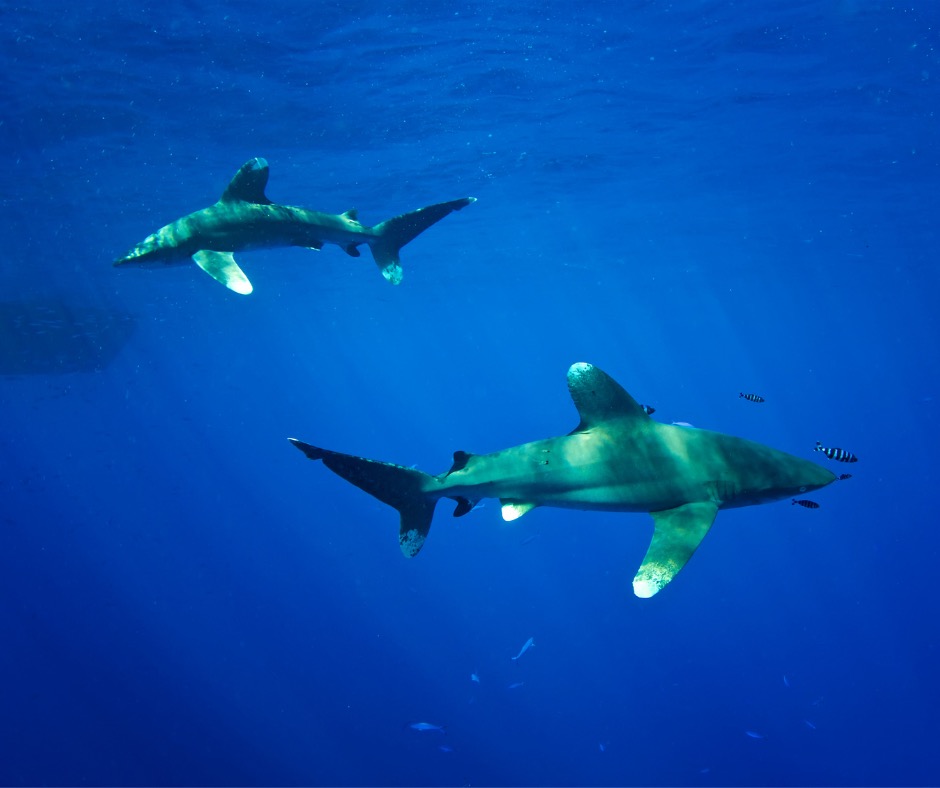
Oceanic whitetip shark populations are under a lot of pressure and are considered critically endangered in the Atlantic. The species has been depleted across the globe for two main reasons:
❗Commercial fishing and bycatch
❗Harvest for the international fin trade
These sharks spend a lot of time near the surface making them vulnerable to getting caught on hooks and in nets, and unfortunately, their large fins make them a valuable target in the international fin trade.
Additional Oceanic Whitetip Shark Resources:
1. Florida Museum – Oceanic Whitetip Shark
2. IUCN Red List, Oceanic Whitetip Shark
3. Ocean Expert Exchange with Candace Fields and the Florida International University
4. Ocean Expert Exchange with Laura García Barcia and the Predator Ecology and Conservation Lab,
Florida International University
5. Ocean Expert Exchange with Candace Fields and Florida International University

